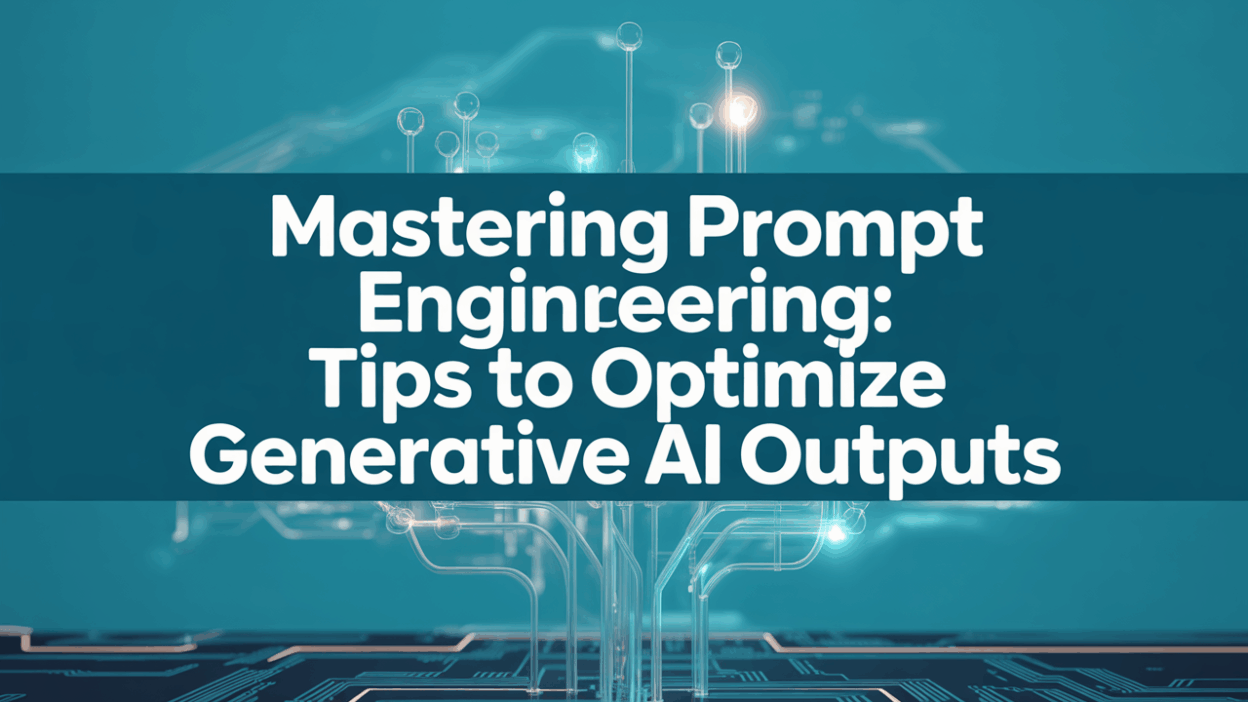In the rapidly evolving landscape of artificial intelligence, mastering prompt engineering has become a crucial skill for anyone looking to harness the power of generative AI effectively. Prompt engineering is the process of crafting specific instructions or ‘prompts’ to guide AI models like ChatGPT and Copilot in generating high-quality outputs . Whether you’re a developer, content creator, or business professional, understanding how to optimize your prompts can significantly enhance the results you get from AI tools.
Understanding the Basics
Before diving into advanced techniques, it’s essential to understand the basics of prompt engineering. This involves familiarizing yourself with the structure and components of effective prompts. A well-crafted prompt should be clear, concise, and provide enough context for the AI to generate relevant and accurate responses. Knowing the capabilities and limitations of the AI model you are working with is also vital .
Crafting Clear Prompts
One of the fundamental aspects of prompt engineering is clarity. Vague or ambiguous prompts often lead to suboptimal outputs. To avoid this, ensure that your prompts are specific and direct. For instance, instead of asking for "information about climate change," try narrowing it down to "discuss the impact of climate change on coastal ecosystems." This specificity helps the AI focus its response and deliver more targeted information .
Iterative Refinement
Another key tip for optimizing AI outputs is iterative refinement. This involves testing different versions of your prompt and refining them based on the results. By continuously tweaking and adjusting your prompts, you can fine-tune the AI’s responses to better meet your needs. This process not only improves the quality of the output but also helps you gain a deeper understanding of how the AI interprets various instructions .
Leveraging Context
Context plays a significant role in prompt engineering. Providing background information or setting the scene can help the AI generate more accurate and relevant responses. For example, if you’re asking for a business report, include details about the industry, target audience, and any specific data points you want included. This additional context guides the AI in producing more tailored and useful content .
Utilizing Advanced Techniques
As you become more comfortable with prompt engineering, exploring advanced techniques can further enhance your results. Techniques such as few-shot prompting, where you provide examples within the prompt, or using delimiters to separate different parts of the input, can significantly improve the AI’s performance. These methods allow for greater control over the output and can help achieve more precise results .
Collaborating with AI
Effective prompt engineering is not just about giving instructions; it’s also about collaboration. Viewing the AI as a partner rather than a tool can lead to more innovative and creative outcomes. Engage in a dialogue with the AI, ask follow-up questions, and refine your prompts based on the interactions. This collaborative approach fosters a dynamic relationship where both human intuition and machine precision work together seamlessly .
Conclusion
Mastering prompt engineering is an ongoing process that requires practice, experimentation, and a willingness to learn. By understanding the fundamentals, crafting clear and specific prompts, leveraging context, and utilizing advanced techniques, you can significantly optimize the outputs from generative AI models. As the adoption of AI continues to grow, those who can effectively communicate with these systems will find themselves at a distinct advantage, unlocking new possibilities in both their professional and personal projects .
